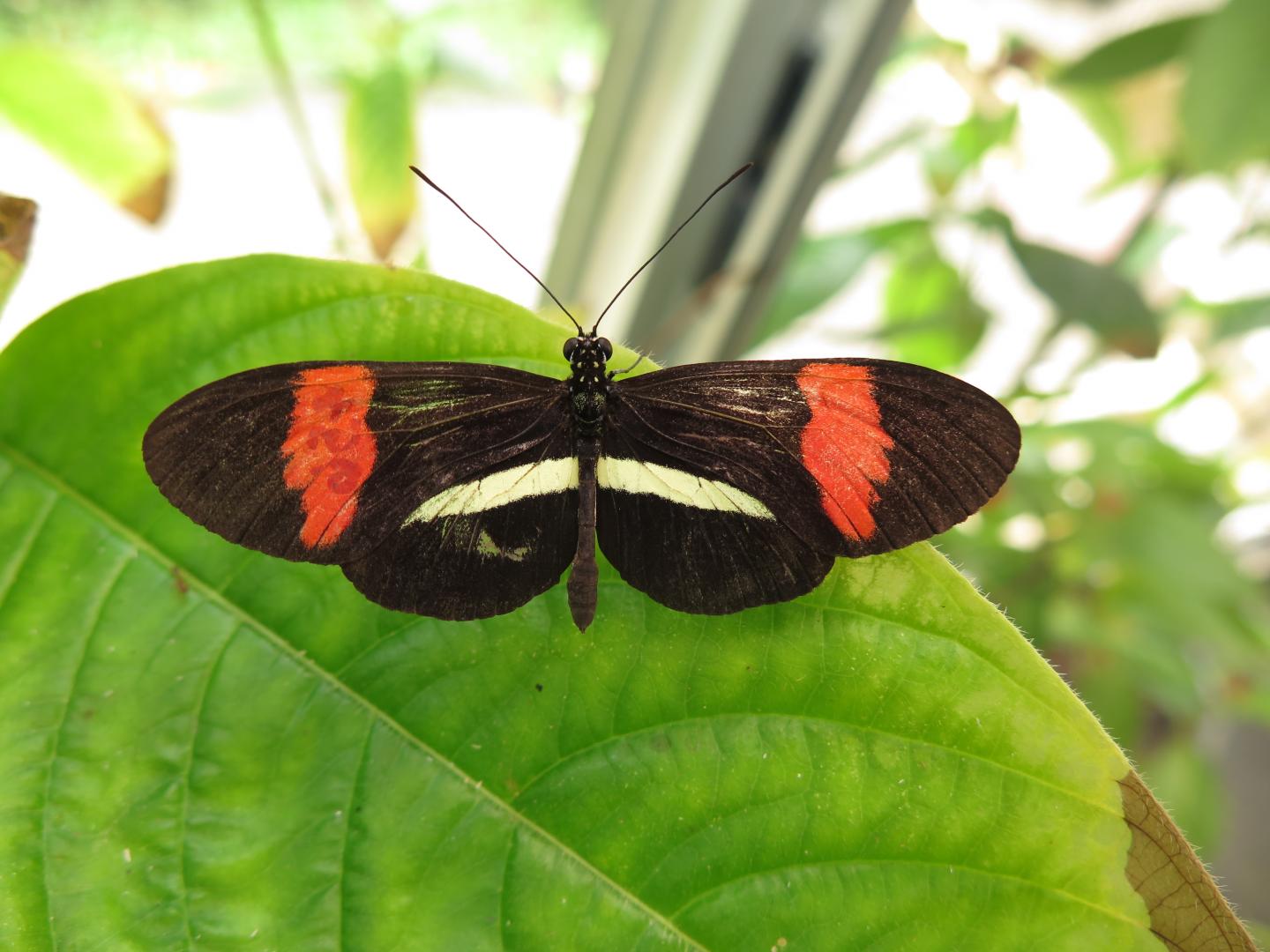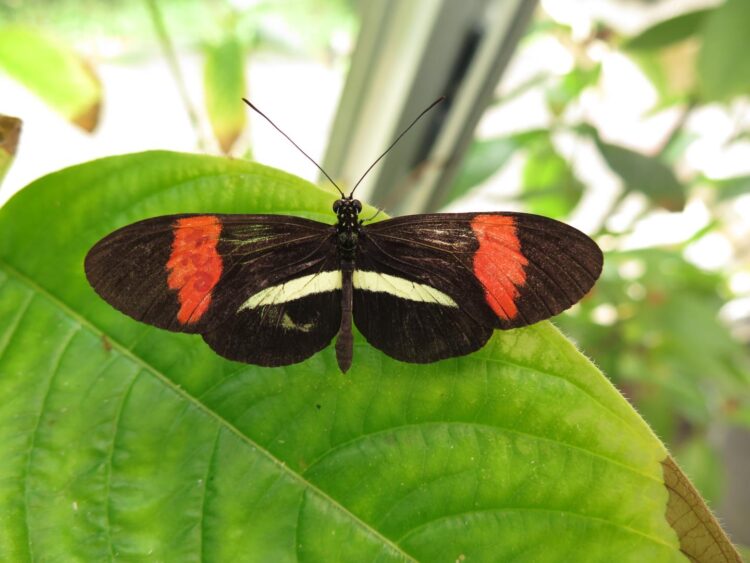Animals and plants take different evolutionary routes to the same chemical

Credit: Kelsey JRP Byers, 4.0, https://creativecommons.org/licenses/by/4.0/
A novel family of enzymes in butterflies produces as an anti-aphrodisiac pheromone the same chemical as one found in many flower scents, but it arose through an entirely independent evolutionary process, according to a new study conducted at the University of Cambridge by Kathy Darragh of University of California at Davis and colleagues, and published in the open-access journal PLOS Biology. The finding highlights the convergent evolution of chemical signals across the kingdoms of life.
(E)-beta-ocimene, a ten-carbon, branched-chain, terpene, is produced in many kinds of flowers, where it serves as a floral attractant to aid pollination. While terpenes are widely produced by microorganisms, plants, and fungi, their biosynthesis in animals has only been described in a few insect species. One is the tropical butterfly Heliconius melponene, the male of which produces ocimene in its sex glands and transfers it to the female upon mating, where it serves as an anti-aphrodisiac, as a “turn off” signal to other potential mates. But a closely related species, Heliconius cydno, does not produce ocimene, leading the authors to investigate the genetics underlying this difference.
They began their investigation by analyzing the H. melponene genome, identifying a genomic region associated with ocimene production. Within the region they found a number of candidate genes, and checked the activity of each gene in the male butterfly’s genitals, looking for ones that were upregulated. Finally, they inserted the best candidate genes into the bacterium E. coli to determine the function of each one. This allowed them to identify two novel terpene synthase enzymes, including one that produced ocimene, the first ocimene synthase identified in any animal.
The authors further showed that the two active enzymes were part of a larger family of genes that arose through multiple rounds of duplication of an ancestral gene, taking on new roles as they evolved. In H. cydno, the authors predict that a once-active ocimene synthase gene has mutated over time losing this function. The new gene family was completely unrelated to the terpene synthase enzymes found in plants or other animals, suggesting it arose independently in the Lepidoptera (butterfly) order.
“The results of our study indicate that the existence of (E)-beta-ocimene in these butterflies is due to an independent and convergent evolutionary event, unrelated to the existence of the same compound found in many of the plants these butterflies feed on,” Darragh said. “The same gene is responsible for the divergence between two closely related species in their anti-aphrodisiac pheromone signaling, a key aspect of their mating ecology.”
“We are very excited about this opportunity to study the genetics of trait evolution at multiple phylogenetic levels. In Heliconius butterflies, there are other closely-related species pairs which differ in their production of ocimene. We hope to study these other pairs to see whether changes in ocimene production is associated with similar types of genetic changes as found in our current study.”
###
Peer-reviewed; Experimental study; Animals
In your coverage please use these URLs to provide access to the freely available articles in PLOS Biology: http://journals.
Citation: Darragh K, Orteu A, Black D, Byers KJRP, Szczerbowski D, Warren IA, et al. (2021) A novel terpene synthase controls differences in anti-aphrodisiac pheromone production between closely related Heliconius butterflies. PLoS Biol 19(1): e3001022. https:/
Funding: KD and AO were supported by the Natural Research Council Doctoral Training Partnership https:/
Competing Interests: The authors have declared that no competing interests exist.
Media Contact
Kathy Darragh
[email protected]
Related Journal Article
http://dx.




